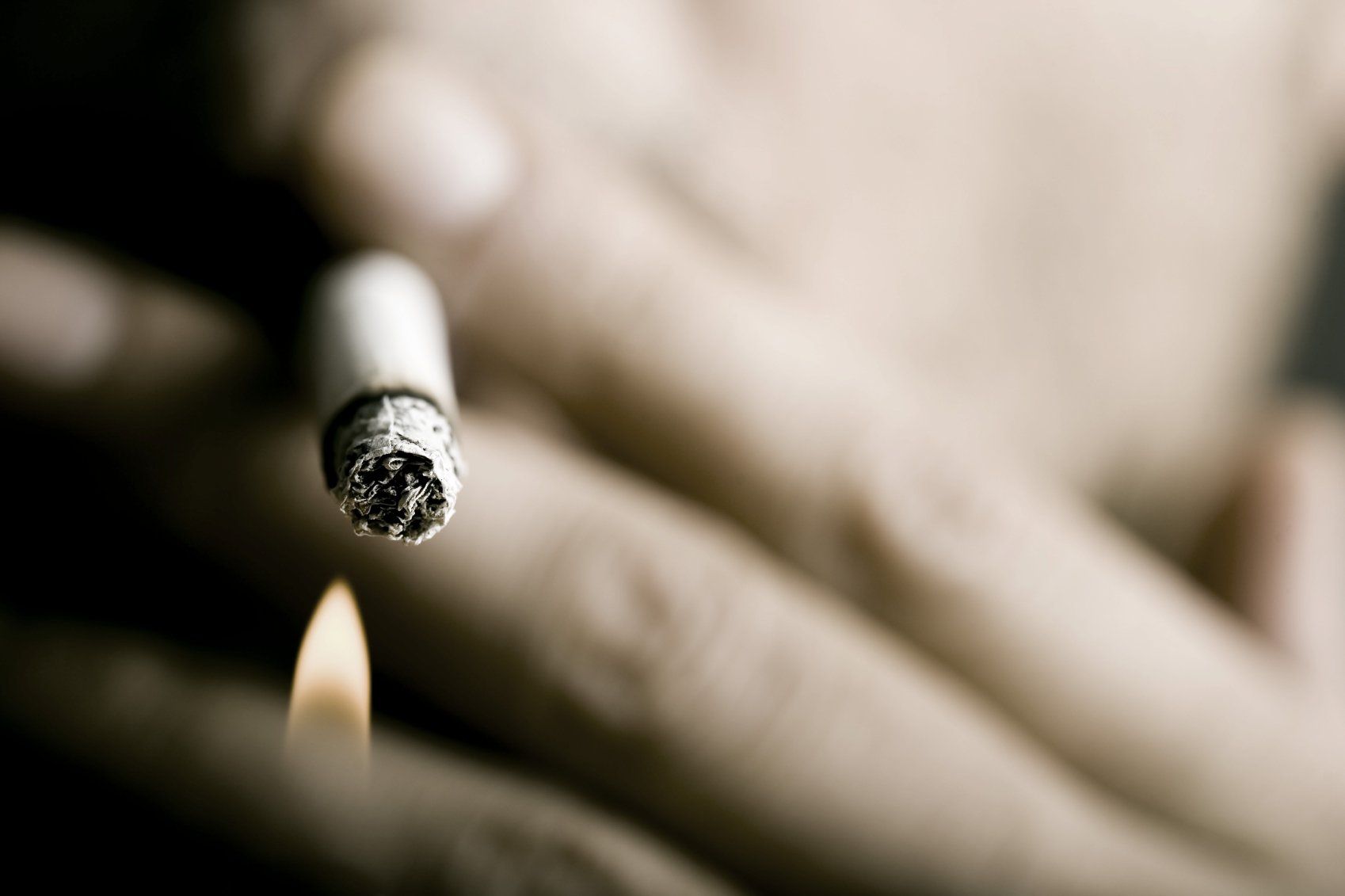Blog

by Arran Waugh
•
13 Dec, 2019
In 2016 independent journalist and author Mackinnon reported on a story about a world-famous free solo climber, Alex Honnold, to shed light about coping with anxiety and other conditions. Alex's brain was analysed in an MRI scan machine while exposed to a sequence of disturbing and exciting images. The experts noted that the part that triggers fear in Alex's mind, called the Amygdala, did not respond in the same way as most people. Alex did indeed have an amygdala for those wondering, which was the first thing observed. The scientists concluded that what made Alex's brain unique could be explained by the ability of his frontal lobe to regulate the feelings of fear and calm him down. Mackinnon explains that anyone can potentially hone this ability through specific training. To Martial Artists, this ability is known as Mushin or 'No Mind' in English and is a focus said to be at the core of a practitioners training. Potentially it encompasses any advanced state where a person can become detached from the thousand chattering thoughts, memories and perceptions. It is a form of purifying the mind or a state of mental clarity and letting go. It is not letting go in the sense of losing control but rather sifting through the unnecessary clutter in our brain attic. -Its elementary dear Watson - Stilling the mind better enables us to perceive and respond freely to a stressful situation. Fight or Flight or Freeze In 1951 a scientist named Walter cannon described fear as 'fight or flight' (aka fight-flight-freeze, please or fawn response, hyper arousal or acute stress response). He noted the response in animals to a threat and the bodily changes of pain, hunger, fear and anger. Interestingly he said that stress was a positive and intuitive ability exhibited by both animals and humans for handling all manner of pressures. The Amygdala Deep in the brain centre is a region containing the Amygdala responsible for emotions, memory and survival instincts and therefore controls fear and anxiety. When in danger the thalamus, the brains relay system fires two signals, one that bypasses the brain cortex directly to the Amygdala. It triggers symptoms which cause our heart to beat faster, sweating, racing thoughts and the general feelings that are associated with anxiety. The initial response takes about a split second to activate. -The first signal triggers the Amygdala in about half a second- The Amygdala is considered the more primitive part of the brain and is out of our control. The second route takes a split second longer and goes to the prefrontal cortex the more advanced rational part and then to the Amygdala. This second signal has the conscious power to stop the first signal form triggering further alarms and determine if a threat truly exists and what to do about it. -The first signal cannot be controlled by the conscious- -The conscious mind can control subsequent reactions- In an anxious disorder, the subconscious keeps sending alarm signals to the Amygdala which self-perpetuates in a loop, ultimately leading to a panic attack. -Don't panic, don't panic Mr Mainwaring- The body becomes overwhelmed, and a feeling and fear of losing control are familiar. The Amygdala also helps attach an emotion to the memory of events. The irrational part and primitive Amygdala may further reinforce these emotions if our thoughts and memories have become self-critical, pessimistic, negative to such stimuli. We are essentially re-triggering the Amygdala as if it was a button which we can't stop pressing. Neurologists state that nerves that fire together wire together. In Anxious people, their wiring keeps them anxious. The trick is to rewire the brain and promote new signals to reduce this connection and allow the natural calming process to become ingrained in the face of danger or a perceived threat. For that, we need to train the conscious mind. Exposure to anxiety has to be manageable, though or we are relearning the fear behaviour. It is also important to note that old fear is never truly erased. However, it can be overridden and inhibited by new memories and put back in the subconscious box. -Amygdala detects stress in the environment - -prefrontal cortex regulates our reactions to stress- Managing Anxiety Returning to the rock climber with the unusual brain, Alex Honnold didn't achieve this feat without training first. For example, Mackinnon said in an interview that Alex started with relatively easy ropeless rock climbs. Therefore, his level of control was manageable. He eventually could do harder ropeless climbs. He would also have an awareness of his limitations and will use ropes to explore harder climbs. Those dealing with fear and anxiety can learn from this. Exposure to anxiety has to be manageable. Any good therapist needs to be aware of this, especially if using a talking therapy where it could lead to fueling the fire if not done carefully. Remember that it is okay to use a rope to test yourself first and many tools that can help you to overcome anxiety. Also, someone will need to be there to hold the line for you. So, it is okay to ask for help, but you are the one taking the lead. You know your limitations. Auriculotherapy and Neuro-Linguistic Programming: A protocol for Anxiety The prefrontal brain is known as 'the executive brain' as it makes voluntary decisions that are decisions that you choose to make and act upon or not. (Olsen, 2012) A point stimulated in auriculotherapy called the master point is said to represent the prefrontal cortex. This point is said to reduce anxiety and nervousness, fear and related conditions by calming the racing thoughts and engendering a positive response. In anxiety disorder, the difficultly to detach from these feelings and thoughts. An alternative to the Freudian analysis is neuro-linguistic programming (NLP). It is a tool used to help a person recognize the language of these feelings and thoughts. The goal is to ' improve our relationship with anxiety and become less fearful of the things that trouble us.' Both therapies are options in conjunction with other treatments. Mindfulness activities such as meditation and martial arts, climbing and painting may help alleviate the symptoms of anxiety. The mindful aspects of these skills also incorporate well into daily activities when dealing with stress. Why not book an appointment today or request more information by contacting Arran: Press the button at the bottom of the page. Disclaimers for Nio gateway to health All the information on this website - https://www.niogatewaytohealth.co.uk/ - is published in good faith and for general information purpose only. Nio gateway to health does not make any warranties about the completeness, reliability and accuracy of this information. Any action you take upon the information you find on this website (Nio gateway to health), is strictly at your own risk. Nio gateway to health will not be liable for any losses and/or damages in connection with the use of our website. Our Disclaimer was generated with the help of the Disclaimer Generator and the Disclaimer Generator. From our website, you can visit other websites by following hyperlinks to such external sites. While we strive to provide only quality links to useful and ethical websites, we have no control over the content and nature of these sites. These links to other websites do not imply a recommendation for all the content found on these sites. Site owners and content may change without notice and may occur before we have the opportunity to remove a link which may have gone 'bad'. Please be also aware that when you leave our website, other sites may have different privacy policies and terms which are beyond our control. Please be sure to check the Privacy Policies of these sites as well as their "Terms of Service" before engaging in any business or uploading any information. Consent By using our website, you hereby consent to our disclaimer and agree to its terms. Update Should we update, amend or make any changes to this document, those changes will be prominently posted here. References Bokuden, T., Shahan, E. (2017), The Hundred Rules of War. Scotts Valley, California: CreateSpace Independent Publishing Platform. Cannon, W. B. (1939), The Wisdom of the Body. New York City; W. W. Norton, Incorporated. Cummins, A. (2015) The Book of Samurai - Fundamental Samurai Teachings: The Collected Scrolls of Natroi-Ryu. London: Watkins Publishing. Ferry, B. (2017), The Amygdala: Where Emotions Shape Perception, Learning and Memories. Rijeka Croatia: Intech. Koetsch, G. (2011) Artists and the Mind in the 21st Century. Frontiers in Human Neuroscience. Vol 5, pp 110-149 Mackinnon, J.B. (2016), The Strange Brain of the World’s Greatest Solo Climber. Available from: http://nautil.us/issue/39/sport/the-strange-brain-of-the-worlds-greatest-solo-climber Oleson. T. (2014), Auriculotherapy Manual: Chinese and Western Systems of Ear Acupuncture. 4th Ed. London: Churchill Livingstone. Seif, M. N., Winston, Sally. (2014), What Every Therapist Needs to Know About Anxiety Disorders: Key Concepts. Insights, and Interventions. New York and London: Routledge. WWWAAA, (2018), Alex Honnold’s amygdala: Analyzing a thrill-seeker’s brain. Mackinnon. J.B. Available from YouTube: https://www.youtube.com/watch?v=ib7SS49Kk-o https://www.thevintagenews.com/2018/01/18/450-year-old-samurai-book-3/ https://lightinthecloudsblog.wordpress.com/2019/01/21/marishiten-for-all-in-2019/ © Arran Waugh and https://www.niogatewaytohealth.co.uk/, 2020. Unauthorized use and/or duplication of this material without express and written permission from this site’s author and/or owner is strictly prohibited. Excerpts and links may be used, provided that full and clear credit is given to Arran Waugh and https://www.niogatewaytohealth.co.uk/ with appropriate and specific direction to the original content.

by Arran Waugh
•
03 Dec, 2019
Statistics in Mental Health Smoking is prevalent by up to two to three times more among person labelled with a psychiatric disorder than the overall population. It is five times higher in those diagnosed with schizophrenia, bipolar disorder, post-traumatic stress disorder (PTSD), and alcohol/substance misuse disorders (Prochaska et al 2017). Nicotine and the Nervous Systems Nicotine affects the nervous systems and stimulates awareness, attentiveness and is an appetite suppressant (NIDA, 2019). - Sounds wonderful righ t - It is absorbed in the bloodstream and partly metabolized by the liver and the kidneys and expelled in the urine (NIDA, 2019). - It leaves the body you say, Great! - - Think again - Nicotine raises levels of fatty acids, glycerol, and lactate in the Blood, thus increasing the risk for atherosclerosis and cardiac muscle disease. In simple terms, it increases your chances of your arteries becoming hard and your heart muscle enlarging and going stiff, so it just won’t PUMP Blood efficiently enough. - AGHHH I’m running out of Oxygen stiff - The long-term effects of smoking are numerous, including emphysema, lung cancer and the above mentioned. Tolerance and Addiction Some Facts: • Smoking is as addictive as other drugs ( Boyd and Luebbert 2019) • Most who quit return to smoking within one year (Nida, 2018) Nicotine withdrawal and quitting smoking Those attempting to quit may be familiar with withdrawal symptoms; the mood swings, occasional cravings, anxiety, irritableness and depression (Nervous system, hormones). It also may affect sleep, causing disturbances, impair concentration, and pilling on the weigh again as the appetite returns as well as other unfavourable symptoms- - complete reversal, Great! - What now?

